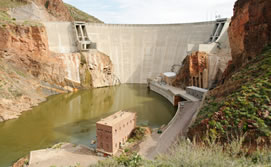The second International Congress on Dam Maintenance and Rehabilitation was held in Zaragoza, organized by the Spanish Society of Dams and Reservoirs (SEPREM) in collaboration with the Water Directorate of the Ministry of the Environment.
The goal of the Congress was to gather together a panel of international experts in a forum where not only knowledge and experience of the diverse and complex facets regarding the maintenance and rehabilitation of dams and reservoirs could be exchanged and debated, but also techniques and good practice preventative measures that could avoid or delay the need for major capital maintenance. The event, coming after the first held in Madrid in 2002, explored new relevant concepts about the maintenance of these infrastructures, such as the impact of climate change on resource management and the search for sustainable maintenance.
During the Congress, Spain stood out as a point of reference for infrastructure maintenance. Among the areas which the country has emphasized in recent years are the establishment of Emergency Plans for dams and new security regulations; investment in updating and modernizing elements of older dams; and finally the application of new technologies for monitoring and maintaining reservoirs.
An example of the latter was the presentation of a new, pioneering informatics application that will allow managing the different monitoring systems for State dams in the Ebro river basin. It is called the GEISER portal (Reservoir Management, Inspection, Security, Equipping and Revisions), a project that the Confederation is still developing in order to centralize the tracking of the 53 State dams on the Ebro. This portal uses, and is complementary to, the telecommunications network that already exists, known as the Automated System for Hydraulic Information (SAIH).
As technicians from the organization pointed out, this is composed of six applications which serve to track dam auscultation; to determine and follow maintenance programs; to manage water levels, for example in flood situations; to track the implementation of Emergency Plans for reservoirs, and in order to have a centralized general technical file for each infrastructure.
During the three days in which the event was held, 350 international engineering experts exchanged experiences, documented in 135 papers from authors representing 24 countries. 37 of these papers were publicly presented by their respective authors.
